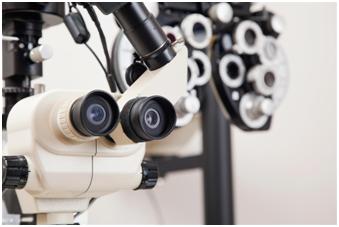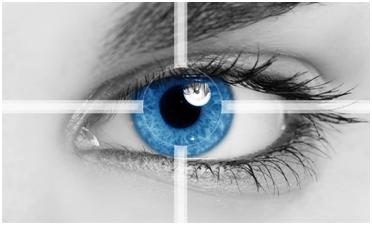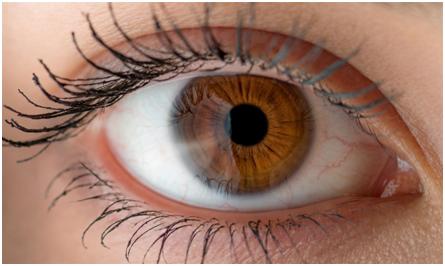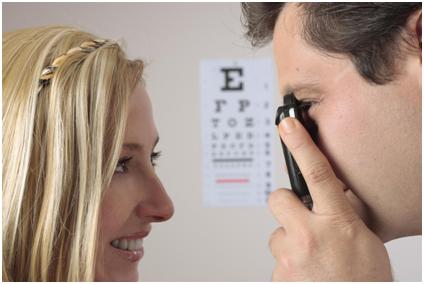The Importance of Diabetic Retinopathy Screening A Leading Cause of Blindness Diabetes is a leading cause of blindness. Each and every year, approximately 8,000 Americans of all ages lose their vision as a result of the disease. Diabetes leads to blindness through a complication known as diabetic retinopathy. Thankfully, physicians can treat the condition as long as they catch it early enough. Unfortunately, too few people know how important it is to get screened regularly for diabetic retinopathy. Too often, diabetics wait until symptoms develop before they undergo diagnostic testing with the proper medical equipment. By then, it is usually too late; they are already on the road to irreversible vision loss.
The key is early detection. With a simple increase in the frequency of screenings, healthcare providers could cut the incidence of blindness by half.
What Is Diabetic Retinopathy? Diabetes graduallychanges the eyes. If left untreated, individuals can develop a condition calleddiabetic retinopathy wherein the blood vessels of the retina becomepermanently damaged. Although diabetes can damage the eyes in any one of a number of ways, diabetic retinopathy is the most common complication. According to the American Diabetes Association, nearly all patients with type 1 diabetes will develop the disease within the first two decades of the onset of diabetes. More than 60 percent of type 2 patients will also get diabetic retinopathy within the same time period. In the long run, an eye affected by diabetic retinopathy can develop severe complications, including:
What are the Risk Factors?
While diabetic retinopathy pays no heed to ageit can strike a 20-year-old as well as a 78-year-oldit is often directly correlated to how long a person has had diabetes, particularly if the disease has been left untreated or has been poorly managed. How Does the Disease Progress?
Diabetes injures the eye in two different ways: first, by weakening the blood vessels; and second, by facilitating the growth of abnormal blood vessels. Macular Edema In the first case, weakened vessels may begin to leak blood or fatty material into the eye. That, in turn, causes the retina to swell a condition known as diabetic macular edema.
Proliferative Retinopathy In the second case, a process called neovascularizationcauses new blood vessels to crop up in the most inappropriate places. These strange newcomers tend to be more fragile than their healthy counterparts, once again increasing the chance of dangerous leaks. Someone with abnormal blood vessel growth is said to have proliferative retinopathy. Glaucoma and Vitreous Hemorrhage When they grow around someones pupil, these abnormal vessels can cause pressure to build up, leading to glaucoma.The scar tissue that forms around the area can then cause the retina to pull away from the back of the eye.Hemorrhaging blood can also spread through the vitreous, or the clear gel-like substance that fills the back of the eye. The leaking fluid can block light from reaching the retina, leading to distorted vision.
What are the Symptoms? Someone suffering from diabetic retinopathy may experience a number of telling symptoms,such as
Most diabetics, however, experience no symptoms at the outset. Unfortunately, the lack of any noticeable vision problems has lulled many people into a false sense of security. Often the only way to know that there is something wrong with the eye is by using medical equipment specially designed to detect problems with the blood vessels. The majority of patients with the condition have no idea that anything is wrong with their eyes until the very last stages of the disease, once they have already developed macular edema or proliferative diabetic retinopathy. One study found that up to 21 percent of patients with type 2 diabetes already had retinopathy when they were first diagnosed with diabetes. By the time someone suffering from diabetic retinopathy does start observing blurred artifacts or floaters, he or she may have missed the critical window of opportunity in which to deal with the problem. Is it Possible to Prevent Diabetic Retinopathy? Thankfully,it is possible to avertvision loss in many cases.There are a number of simple things diabetics can do to lower their chances of developing diabetic retinopathy.The first and best way to protect the eyes is to keep diabetes under control. Preserving the proper blood sugar levels is therefore the first order of business. By monitoring blood sugar, taking insulin on a regular basis, maintaining a healthy weight, and lowering cholesteroland blood pressure levels, a diabeticcan help minimize the long-term damage to theblood vessels of the eyes. Ignoring the disease, on the other hand, is the surest road to blindness. Unfortunately, the longer someone has had untreated diabetes, the higher hisor her chances are of developing the complication.People who fail to treat their diabetes properly are 25 times more likely to become blind than the average person. Of course, even those who vigilantly monitor their condition and maintain their health suffer from diabetic retinopathy. Thats why screening the eyes with specificmedical devices is key to arresting the development of the disease.
How Does Screening Help? The best way to nip diabetic retinopathy in the bud is to screen the eyes for signs of the disease. There are a number of methods a primary care physician, optometrist, or ophthalmologist will use to look for damaged blood vessels and other signs of the condition. Dilated Eye Exam and Retinal Photographs The first method of screening is a dilated eye exam performed by an ophthalmologist. They may use vision screeners to look for signs of damage, or they may take retinal photographsin order to detect abnormalities. New technology is also making it easier than ever for primary care physicians to catch early signs of diabetic retinopathy. For an affordable price, cutting-edge medical equipment such as the RetinaVue Imager can take fundus images in ten minutes and send them via a secure HIPAA-compliant network to be evaluated by a board-certified retinal specialist. By allowing patients to take retinal images as part of their routine check-up, these new scanners increase the likelihood of stopping diabetic retinopathy before it becomes a major medical issue. Fluorescein Angiogram Another test called a fluorescein angiogram can also help diagnose macular edema or proliferative diabetic retinopathy. In this procedure, a dye is injected into the patients arm. Once it makes its way up to the retina, an ophthalmologist can see if normal blood vessels are leaking or if abnormal vessels have developed. Ocular Coherence Tomography This test involves taking a cross-sectional image of the retina. The technician shines a light through the eye, which is then reflected back from the various layers of the retina, revealing areas that are filled with fluid.Regular diabetic retinopathy screening is non-negotiable for diabetics. Even those who faithfully monitor their blood sugar levels and follow their physicians instructions to the letter will still need to get their eyes scanned. Unfortunately, it is one of the inevitable consequences of living with diabetes. How Often Is Screening Necessary?
Regular screening and timely treatment can reduce the risk of blindness by a stunning 95 percent, according to the
Kellogg Eye Center. Everyone who has been diagnosed with diabetes should therefore have their eyes examined straightaway and at regular intervals perhaps once a year, along with their annual physical exams. In addition to the regular screening that all diabetics should undergo, pregnant women should also see an ophthalmologist during their first trimester. The medical profession has developed a few treatments that can minimize or reverse some of the damage associated with diabetic retinopathy. While those with very mild cases may not undergo any treatment except constant monitoring to check the progress of the disease, others may need to consider the following options: Medication The first line of defense is a special medication containing antibodies that works to counteract the progression of the disease. Called Anti-VEGF therapy, the process involves injecting the antibodies into the back of the patients eye. Another option uses repeated steroid injections to reduce the amount of leaking fluid in the retina. Laser Surgery Many patients undergo laser surgery to repair leaking blood vessels and reattach the retina firmly to the back of the eye. During the procedure, usually performed in a physicians office or outpatient clinic, an ophthalmologist will focus a laser medical device on the affected retina in order to seal the leaking vessels. In most cases, laser treatment fails to restore normal vision (another reason it is critical to catch the disease early), but is highly effective in preventing further vision loss. Vitrectomy If major hemorrhage has already occurred, healthcare professionals can also perform an operation called a vitrectomy. The treatment involves using medical equipment to replace the damaged and blood-filled vitreous of the eye, and then to replace it with a clear solution. Patients who suffer from advanced proliferative diabetic retinopathy may be candidates for this microsurgical procedure. In the end, only vigilance can protect patients from the life-altering effects of diabetic retinopathy. Faithfully monitoring diabetes and regularly checking the eyes can mean the difference between sight and blindness. Source |





